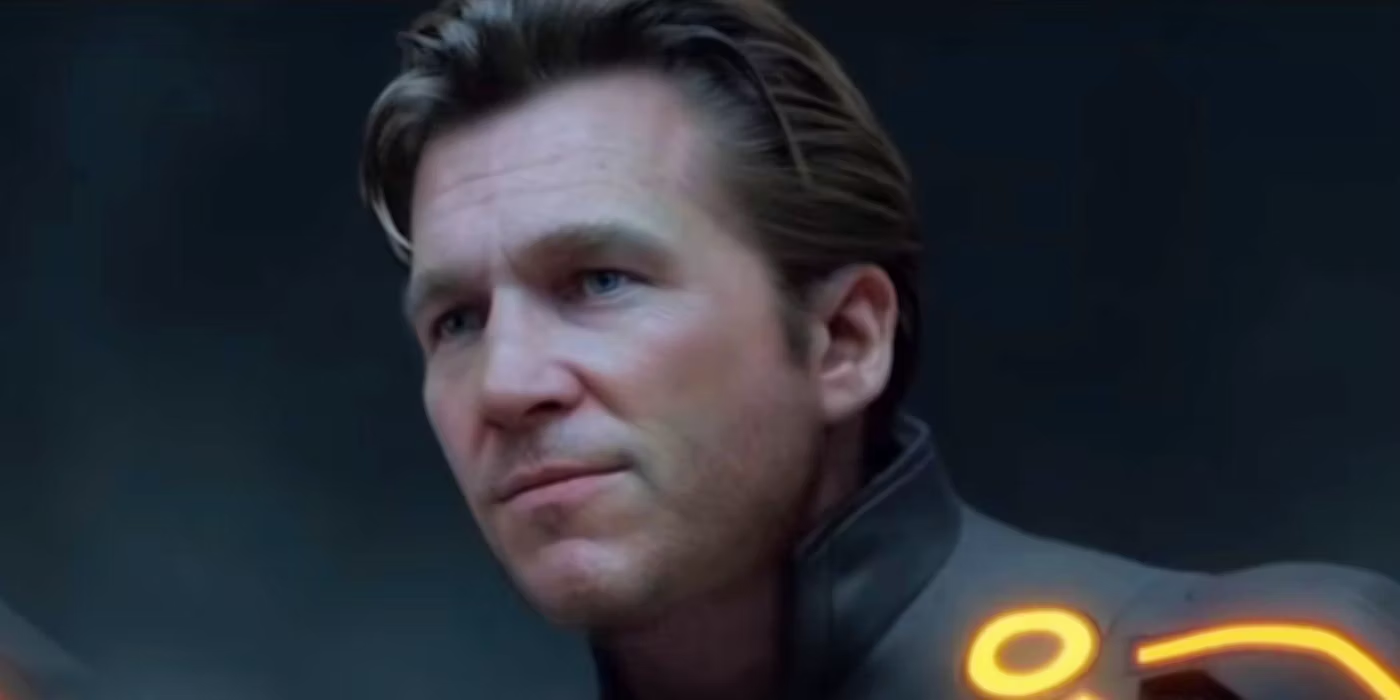Ahead of his return to the Grid in the next installment, Jeff Bridges has some candid thoughts on the deaging CGI from Tron: Legacy. The actor reprised both his roles of programmer Kevin Flynn and program Clu for the 2010 sequel to the 1982 sci-fi adventure, as an older Flynn is trapped within the Grid by a now tyrannical Clu, who asserts his dominance over the virtual realm. Directed by Top Gun: Maverick‘s Joseph Kosinski, Tron: Legacy also starred Garrett Hedlund, Olivia Wilde, and Michael Sheen, and though not a critical hit, has amassed a cult following in the years since.
With Bridges set to return to the Grid in Tron: Ares, the actor opened up to Josh Horowitz’s Happy Sad Confused podcast about his dual role in the 2010 entry in the franchise and commented on the then-uncommon practice of digital de-aging and duplication. Bridges described how his likeness was captured for the feature and how the technology stood out at the time:
It’s the new thing… I got scanned on the computer for when we did Tron 2 — What was it called? — Legacy.
Despite the ambitious nature of the technology, Bridges admitted he wasn’t entirely pleased with the result. The actor even admitted he felt Clu resembled controversial television host Bill Maher rather than himself from the 1980s:
I wasn’t particularly fond of that recreation of myself. I thought I looked more like Bill Maher than myself.
Clu Was An Ambitious Task For Late 2000s VFX Artists
Much like how the original Tron pushed the boundaries on what digital effects can achieve in their time, Tron: Legacy sought to stand out from what other features were achieving as the digital VFX technologies had advanced. Taking advantage of the technologies that Avatar had utilized to give its Na’vi cast life, the digital effects team took Bridges’ likeness from 1984’s Against All Odds as a basis for Clu’s appearance, replacing the head of on-set actor double John Reardon in shots where he’d replicate Bridge’s performance in a process that took roughly two years to bring to life.
For its time, Tron: Legacy would earn acclaim for its daring special effects work, becoming a point of praise among an audience of critics who were largely divided on the movie overall. While its narrative and character stories failed to land with every critic, the sequel did succeed in following in the footsteps of the original by pushing what digital effects could do.
Our Take On Jeff Bridges’ Digital Deaging
Time Has Not Been Kind To Clu’s Likeness
Looking back in 2024, it can become far easier to see where Bridges’ critiques of Clu’s execution are coming from. Though the efforts are impressive for its time, there is also a stillness to Clu’s execution that makes the character seem almost plastic-like, being unable to capture the character’s emotion fully. As such, Clu falls into the Uncanny Valley trap of lacking a lifelike performance.
However, in Clu’s case, it can be argued that this effect is potentially an advantage, especially in a story that tackles sentience and what defines a being, with his digital existence standing out from any other being in the Grid. Despite this far more optimistic reading and further innovations in digital de-aging and duplication, it appears Bridges will not have to reprise the role of Clu in the upcoming Tron: Ares. However, like Tron and Tron: Legacy offered before, many may hope the upcoming third movie surprises people and finds its own way to innovate the practice of VFX.
Source: Happy Sad Confused
